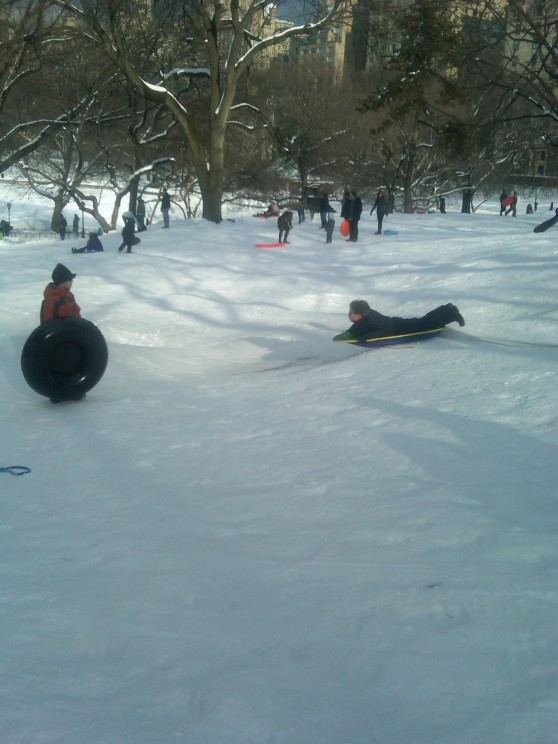In the trailer of Transcendence, an authoritative professor embodied by Johnny Depp says that “the path to building superintelligence requires us to unlock the most fundamental secrets of the universe.” It’s difficult to wrap our minds around the possibility of artificial intelligence and how it will affect society. Nick Bostrom, a scientist and philosopher and the author of the forthcoming Superintelligence: Paths, Dangers, Strategies, discusses the science and reality behind the future of machine intelligence in the following video series.
Could you upload Johnny Depp’s brain?
Click here to view the embedded video.
How imminent is machine intelligence?
Click here to view the embedded video.
Would you have a warning before artificial intelligence?
Click here to view the embedded video.
How could you get a machine intelligence?
Click here to view the embedded video.
Nick Bostrom is Professor in the Faculty of Philosophy at Oxford University and founding Director of the Future of Humanity Institute and of the Program on the Impacts of Future Technology within the Oxford Martin School. He is the author of some 200 publications, including Anthropic Bias, Global Catastrophic Risks, and Human Enhancement. His next book, Superintelligence: Paths, Dangers, Strategies, will be published this summer in the UK and this fall in the US. He previously taught at Yale, and he was a Postdoctoral Fellow of the British Academy. Bostrom has a background in physics, computational neuroscience, and mathematical logic as well as philosophy.
Subscribe to the OUPblog via email or RSS.
Subscribe to only technology articles on the OUPblog via email or RSS.
The post The viability of Transcendence: the science behind the film appeared first on OUPblog.

I've tucked away the porcelain creamer, little orange flowers and cascading drapery, replacing the objects with photo references for a project I'm really excited about doing. The inspiration was a photograph of my oldest daughter taken about a year ago at El Capitan State Beach. However, I'm changing the location from a rocky beach to a rocky riverbed with some trees in the background.
I'm looking forward to playing with some colors that have not been on the palette for other projects - mainly Phthalo blue and green. I'm also excited about exploring colors and patterns of stones in water - I've always been drawn to that in nature. But, most of all, I'm delighted to be working with a specific concept - trying to capture the moment of quiet contemplation or listening in prayer.
I have flashes of what I think the end product might look like, but I've learned not to get hung up in those fleeting visions. They give me a direction, but the journey will likely take me down any number of possible paths. But, this is merely a study for the sake of exploration. Ultimately, I see this as a fairly large painting - large for my space, anyway, requiring more than a little tabletop. By the time I'm ready to move on to canvas, the weather should be comfortable enough to work in the garage again.
By Michelle Rafferty
After a nice little afternoon in Central Park yesterday, I consulted the AIA Guide to New York City to read up on the history of the 840 acre playground (which, I learned, is larger than Monaco). I share with you now my gleanings on how the park came to be the funky hybrid of leisure and active sport it is today, as well as my own thoughts on why parks prove we all really aren’t that different.
Long before its completion (which took 20 years and ten million cartloads of stone, earth, and topsoil) New Yorkers rich and poor alike flocked to Central Park “to promenade, to see and be seen.” Originating from William Cullen Bryant’s call for a large public “pleasure ground,” its design was “simple” and “picturesque”: trees and open space, individually designed bridges, rock outcroppings, footpaths, bridle paths, the revolutionary cross-town road, and carriage drives that were curved to prevent racing.
And these plans were closely followed until the early 20th century when the automobile and active sports arrived. Since then, the gravel paths were paved, and tennis courts, playgrounds, and even a hybrid ice-rink/swimming pool have been added. Today, the New York Road Runners sponsor races of all distances in the park every month and one can buy a VIP bleacher ticket to the New York City Marathon finish line (on the west side of the park) for $75. These innovations have all added up to a sort of paradox – bikers and intense rollerblade squads do countless loops around the park’s six mile perimeter, while inside people enjoy leisurely picnics, nature hikes, and Shakespeare.
For transplants like me, Central Park provides a sweet sense of irony. Take sledding for example. I went to college in Michigan, a state where snow sticks about 5 months out of the year; here, a snow day is a holiday. That’s why, when walking by Pilgrim Hill (“the grand dame of NYC sledding institutions“) yesterday afternoon, I felt so obliged to stop and join the commotion. If it weren’t for the high-rises hovering around us, the scene could have been anywhere. Contrary to what some might think, New Yorkers sled just like everyone else. I have photographic evidence to prove it! I’ve posted some pictures below so you can a) enjoy the beauty of a snow covered Central Park and b) see that parks everywhere are threaded together by one of humanity’s most basic instincts: if there’s snow and hill, we’ll find a creative way to get down.
NEW YORKERS, WE…
GO HEADFIRST,

GO BUTTFIRST,
AND WE TAKE






Really interesting photos. I like the way you laid them all out. That was interesting in itself. Thanks for sharing.